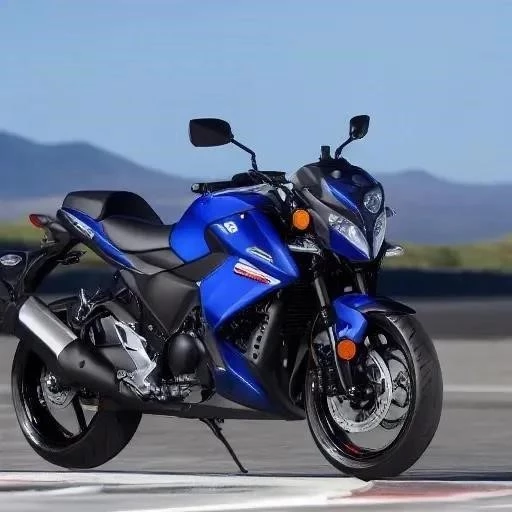The year 2017 marked a significant update for Suzuki enthusiasts with the launch of the updated Gixxer and Gixxer SF models. These bikes were not just about aesthetics; they represented a leap towards cleaner emissions, conforming to the stringent BSIV (Bharat Stage IV) emission norms. This upgrade signified Suzuki’s commitment to environmental responsibility while still delivering the performance and style that riders had come to expect. The 2017 Suzuki Gixxer and Gixxer SF models brought a blend of refined engine technology and subtle design enhancements; Let’s delve into what made these motorcycles stand out in a competitive market, offering a compelling option for daily commuting and weekend adventures. The 2017 Suzuki Gixxer and Gixxer SF lineup was a testament to Suzuki’s engineering prowess.
Engine and Performance: Breathing Cleaner
The heart of the 2017 update lay in the engine. While the engine capacity remained the same, the transition to BSIV compliance involved significant recalibration and optimization. This ensures that the engine produces fewer harmful emissions without compromising the power delivery and fuel efficiency that the Gixxer was known for.
- Engine Type: 154.9cc, Single-cylinder, Air-cooled
- Power Output: Approximately 14.8 PS
- Torque Output: Approximately 14 Nm
- Fuel System: Carbureted
Design and Features: Subtle Refinements
The 2017 models saw subtle design tweaks that enhanced their visual appeal. While the overall silhouette remained familiar, the attention to detail set them apart. New color schemes and updated graphics provided a fresh look, while features like the fully digital instrument cluster and LED taillight continued to be standard.
Key Design Elements:
- Aggressive styling with sharp lines
- Sporty split seat design
- Stylish alloy wheels
- Digital instrument cluster providing essential information
The Riding Experience: Nimble and Engaging
The Suzuki Gixxer and Gixxer SF were renowned for their comfortable riding position and agile handling. The 2017 update maintained these characteristics, offering a delightful riding experience for both city commutes and longer rides. The refined engine delivered smooth acceleration and ample torque, making it easy to navigate through traffic or cruise on the open road. The updated engine delivered a smoother, more refined riding experience.
FAQ Section
Q: What does BSIV compliance mean?
A: BSIV refers to Bharat Stage IV, which are emission standards set by the Indian government to regulate the amount of pollutants released by vehicles. It’s an environmental regulation aimed at reducing air pollution.
Q: Did the engine power change significantly with the BSIV update?
A: While the engine was recalibrated for BSIV compliance, the power output remained largely similar to the previous models. The focus was on reducing emissions without sacrificing performance.
Q: Were there any major cosmetic changes in the 2017 models?
A: The cosmetic changes were mostly subtle, including new color schemes and updated graphics. The overall design and features remained largely the same.
Q: Are the 2017 Gixxer and Gixxer SF fuel-injected?
A: No, the 2017 models retained the carbureted fuel system. Fuel-injected versions came in later iterations.
But did the improved emissions come at the cost of that signature Gixxer growl? Was the fuel efficiency truly maintained after the BSIV upgrade, or did riders experience a subtle dip in kilometers per liter? Considering the competition from other 150cc motorcycles at the time, did the subtle design tweaks of the 2017 models truly make them stand out, or were they overshadowed by more radical designs? And what about the ride quality – did the suspension effectively absorb bumps and potholes, ensuring a comfortable ride, or did riders find themselves yearning for a smoother experience?
Pricing and Value: Was it Worth the Investment?
Did the price of the 2017 Gixxer and Gixxer SF reflect the value proposition they offered? Were they competitively priced compared to other motorcycles in the same segment? Did the subtle upgrades justify the price increase, if any? Was the cost of ownership, considering factors like maintenance and fuel consumption, reasonable for the target audience? And ultimately, did the 2017 Gixxer and Gixxer SF offer a good return on investment for riders seeking a reliable and enjoyable commuter bike?
Comparing the Gixxer and Gixxer SF:
| Feature | 2017 Gixxer | 2017 Gixxer SF |
|---|---|---|
| Fairing | No Fairing | Full Fairing |
| Aerodynamics | Standard | Improved |
| Riding Posture | Slightly more upright | Slightly more aggressive |
| Intended Use | City Commuting, occasional touring | City Commuting, touring |
Market Reception: Did it Resonate with Riders?
How was the 2017 Gixxer and Gixxer SF received by the Indian motorcycle market? Did they achieve the sales figures that Suzuki had anticipated? Were there any common criticisms or praises from owners and reviewers? Did the BSIV compliance prove to be a significant selling point for environmentally conscious riders? And did the 2017 models successfully build upon the legacy of the Gixxer brand, or did they fall short of expectations?
Ultimately, were the changes to the 2017 Suzuki Gixxer and Gixxer SF enough to maintain its relevance in a rapidly evolving market? Did Suzuki address the key concerns and desires of their target audience with these models? Were there missed opportunities to further enhance the performance, features, or styling? Did the 2017 Gixxer and Gixxer SF truly represent a “new chapter” in commuting, or were they simply a stepping stone towards future improvements?
Here is the continuation of the text in an interrogative style, with HTML tags:
Did the 2017 Suzuki Gixxer and Gixxer SF manage to capture the hearts of seasoned riders and newcomers alike? Did their reliability stand the test of time, proving them to be steadfast companions on countless journeys? And did these models play a significant role in shaping Suzuki’s reputation in the competitive Indian motorcycle market, solidifying their position as a force to be reckoned with?
Long-Term Ownership: A Lasting Impression?
But what about the long-term ownership experience? Did the initial excitement fade after a few years of riding? Did the build quality hold up against the rigors of daily use, or did issues start to surface? Were spare parts readily available and reasonably priced, ensuring that owners could keep their bikes in top condition without breaking the bank? And did the resale value of the 2017 Gixxer and Gixxer SF remain competitive, allowing owners to recoup a decent portion of their initial investment when it was time to upgrade?
Maintenance and Reliability: Did They Deliver?
- Were routine maintenance tasks easy to perform, even for novice mechanics?
- Did the engine prove to be robust and reliable, requiring minimal repairs?
- Were there any common issues or problems reported by owners?
- Did Suzuki provide adequate support and service to owners?
The Competition: How Did They Stack Up?
In a market brimming with alternatives, how did the 2017 Gixxer and Gixxer SF fare against their rivals? Did they offer a compelling combination of performance, features, and value that set them apart from the competition? Did they excel in specific areas, such as handling or fuel efficiency, where they outperformed their competitors? And did they manage to carve out a unique niche for themselves in the crowded 150cc segment?
Direct Competitors: Did They Measure Up?
Did the Yamaha FZ-S offer a sportier riding experience? Did the Honda CB Hornet 160R boast a more refined engine? Did the Bajaj Pulsar NS160 provide better value for money? And did the TVS Apache RTR 160 4V offer a more advanced feature set?
Legacy and Influence: Did They Leave a Mark?
Looking back, what lasting impact did the 2017 Gixxer and Gixxer SF have on the Indian motorcycle scene? Did they inspire other manufacturers to raise their game in terms of design, performance, or technology? Did they contribute to the growing popularity of sporty commuter bikes? And did they pave the way for future generations of Gixxer models, setting a new standard for excellence in the 150cc segment?
Here is the continuation of the text in an interrogative style, with HTML tags:
Did the 2017 Suzuki Gixxer and Gixxer SF manage to capture the hearts of seasoned riders and newcomers alike? Did their reliability stand the test of time, proving them to be steadfast companions on countless journeys? And did these models play a significant role in shaping Suzuki’s reputation in the competitive Indian motorcycle market, solidifying their position as a force to be reckoned with?
Long-Term Ownership: A Lasting Impression?
But what about the long-term ownership experience? Did the initial excitement fade after a few years of riding? Did the build quality hold up against the rigors of daily use, or did issues start to surface? Were spare parts readily available and reasonably priced, ensuring that owners could keep their bikes in top condition without breaking the bank? And did the resale value of the 2017 Gixxer and Gixxer SF remain competitive, allowing owners to recoup a decent portion of their initial investment when it was time to upgrade?
Maintenance and Reliability: Did They Deliver?
- Were routine maintenance tasks easy to perform, even for novice mechanics?
- Did the engine prove to be robust and reliable, requiring minimal repairs?
- Were there any common issues or problems reported by owners?
- Did Suzuki provide adequate support and service to owners?
The Competition: How Did They Stack Up?
In a market brimming with alternatives, how did the 2017 Gixxer and Gixxer SF fare against their rivals? Did they offer a compelling combination of performance, features, and value that set them apart from the competition? Did they excel in specific areas, such as handling or fuel efficiency, where they outperformed their competitors? And did they manage to carve out a unique niche for themselves in the crowded 150cc segment?
Direct Competitors: Did They Measure Up?
Did the Yamaha FZ-S offer a sportier riding experience? Did the Honda CB Hornet 160R boast a more refined engine? Did the Bajaj Pulsar NS160 provide better value for money? And did the TVS Apache RTR 160 4V offer a more advanced feature set?
Legacy and Influence: Did They Leave a Mark?
Looking back, what lasting impact did the 2017 Gixxer and Gixxer SF have on the Indian motorcycle scene? Did they inspire other manufacturers to raise their game in terms of design, performance, or technology? Did they contribute to the growing popularity of sporty commuter bikes? And did they pave the way for future generations of Gixxer models, setting a new standard for excellence in the 150cc segment?
Did the 2017 Gixxer models succeed in appealing to a broad spectrum of riders, from urban commuters to weekend enthusiasts? Did their blend of practicality and style resonate with the younger generation, solidifying the Gixxer brand’s appeal as a youthful and aspirational choice? And did these models represent a significant step forward in Suzuki’s commitment to providing affordable and reliable motorcycles to the Indian market?
Future Prospects: What Lies Ahead for the Gixxer Lineage?
Considering the evolution of the motorcycle industry, what does the future hold for the Gixxer nameplate? Will Suzuki continue to innovate and improve upon the Gixxer platform, pushing the boundaries of performance and technology? Will electric versions of the Gixxer emerge, catering to the growing demand for sustainable transportation? And will the Gixxer brand maintain its relevance in the face of increasing competition and changing consumer preferences?
Evolution of Technology: Will Gixxer Embrace the Future?
- Will future Gixxer models incorporate advanced features such as traction control and ABS?
- Will connectivity features like Bluetooth integration and smartphone compatibility become standard?
- Will Suzuki explore alternative fuel technologies, such as hybrid or electric powertrains?
- Will design aesthetics evolve to reflect changing trends and consumer tastes?
The Verdict: Were the 2017 Gixxer and Gixxer SF a Success?
Ultimately, after all the analysis and reflection, can the 2017 Gixxer and Gixxer SF be considered a success? Did they achieve their intended goals and meet the expectations of riders? Did they contribute positively to Suzuki’s brand image and market share? And did they leave a lasting legacy that will continue to influence the Gixxer lineage for years to come?
So, did the BSIV compliant 2017 Suzuki Gixxer and Gixxer SF truly deliver on their promise of a cleaner and more refined riding experience? Did they manage to strike the perfect balance between performance, fuel efficiency, and style? And did they ultimately cement their place as iconic motorcycles in the hearts of Indian riders, leaving an indelible mark on the two-wheeled landscape?


